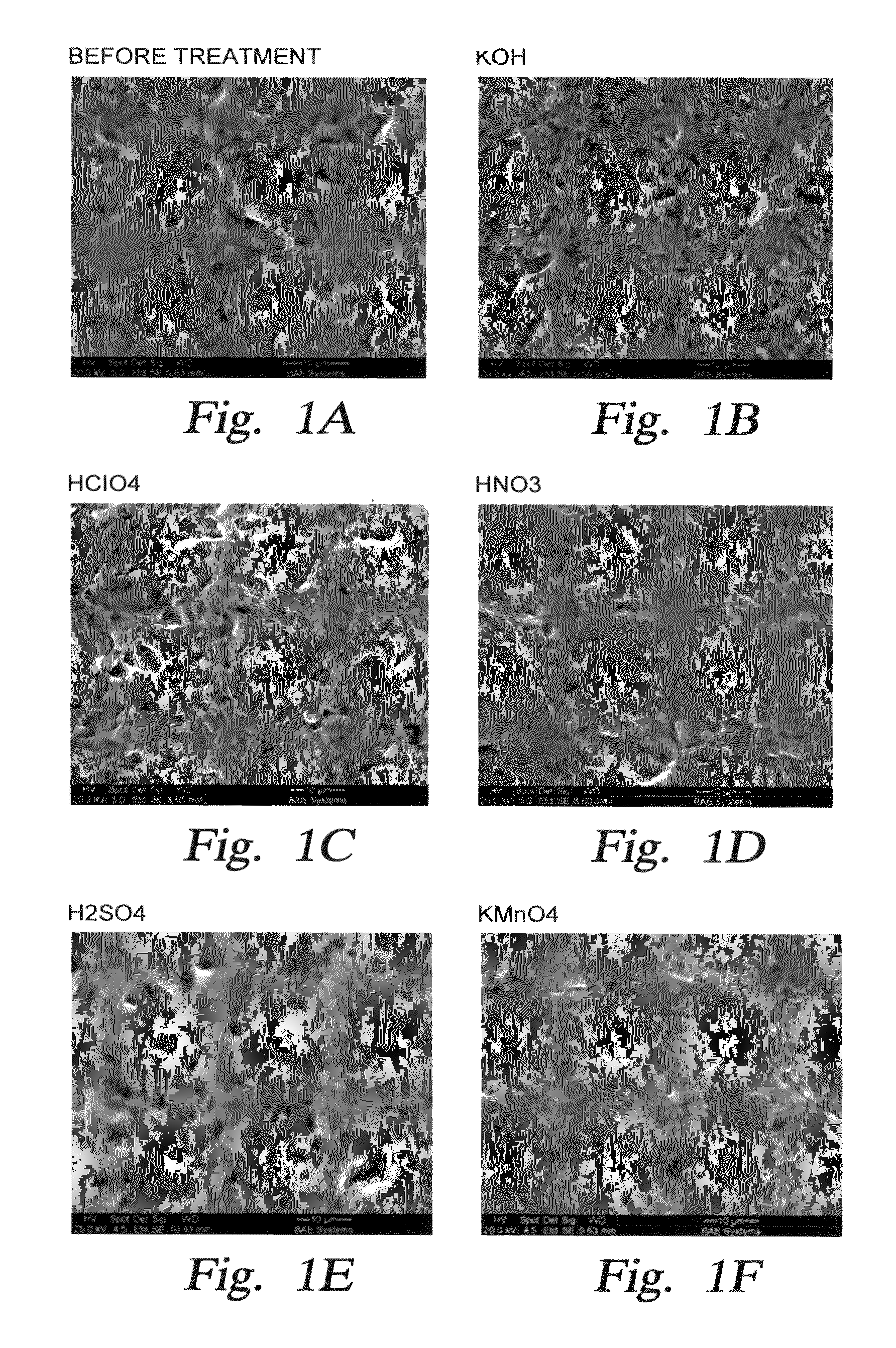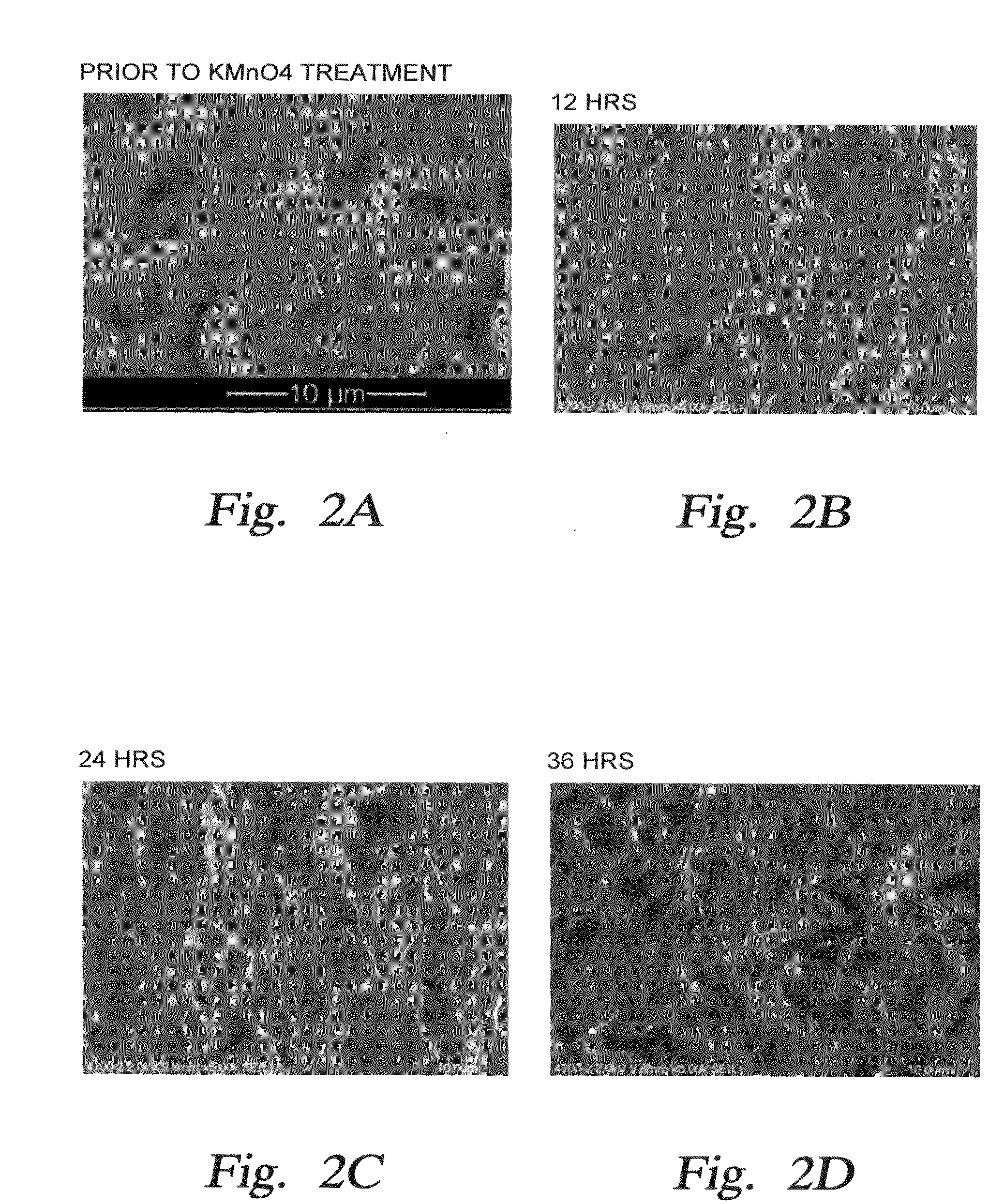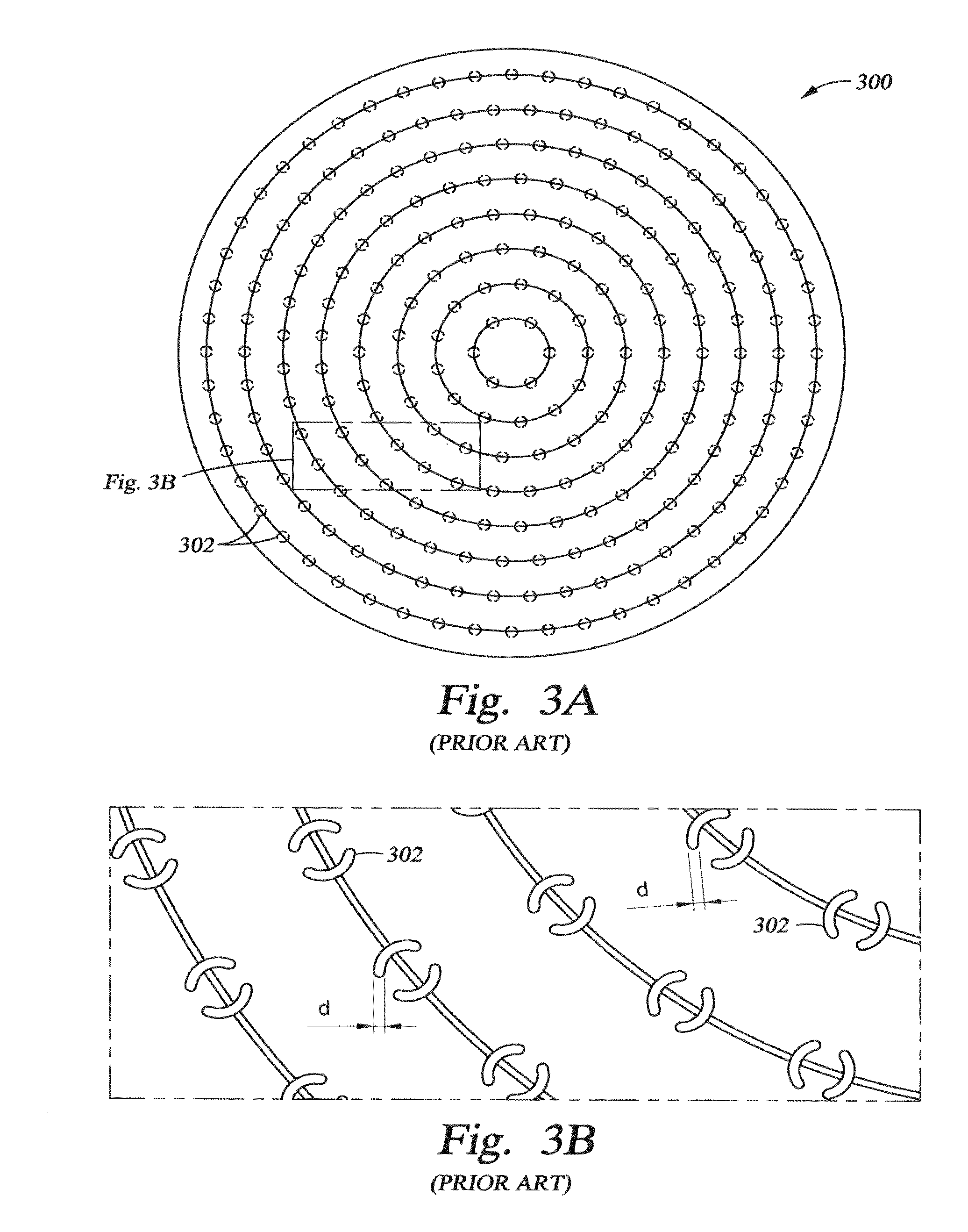Chemical treatment to reduce machining-induced sub-surface damage in semiconductor processing components comprising silicon carbide
- Summary
- Abstract
- Description
- Claims
- Application Information
AI Technical Summary
Benefits of technology
Problems solved by technology
Method used
Image
Examples
example one
[0039]FIGS. 1A through 1F show comparison photomicrographs of the surface of CVD silicon carbide bulk test specimens which were exposed to a wet treatment by various oxidizing agents for 96 hours at 66° C., with the exception of the H2O2 and H2SO4 oxidizing agent, where the exposure time was 4 hours at 92° C. A smoother, more rounded topography generally indicates that there has been more reaction with the wet oxidizing solution, as confirmed by the measurement of changes in weight of the test specimens. The test specimens measured 10.031 mm in length, 2.062 mm width, and were 1 mm thickness. The weight of an individual test specimen was about 0.65 g, and the total surface area per specimen was 2.839776 cm.
[0040]FIG. 1A shows a photomicrograph of the silicon carbide surface after machining, where the surface was diamond grinded using a technique commonly known in the art. One and a half cm on the photomicrograph represents a distance of about 10 μm. The surface has a general roughne...
example two
[0049]Test results related to Example One indicated that KMnO4 and the mixture of H2O2+H2SO4 were the most promising wet treatment oxidation agents based on data for weight changes and microstructural morphology; and, based on surface profile measurements which indicated flatness of the surface after the silicon oxide layer was stripped off using the hydrofluoric acid solution.
[0050]The surface profile measurements were made using surface profilometry measurement length scan (Pmrc %). The Pmrc is the length of bearing surface, i.e., the surface that is in direct contact with the profilometer tip, expressed as a percentage of the evaluation length at a nominal depth below the highest peak. The technique of Pmrc measurement is well known in the art. Pmrc data compliments the SEM examination as an indication of whether the surface has become more smooth. The higher the Pmrc value, the more smooth the length / area of that particular measurement. Typically, a minimum of 11 length / area sca...
example three
[0059]Evaluation of surface oxidation of the bulk CVD silicon carbide test specimen surfaces using the H2O2+H2SO4 mixture was also further investigated. In particular, the silicon carbide test specimen surfaces were treated with the H2O2+H2SO4 mixture 3 times, where the soaking time period in the mixture was 4 hours each time, and where the mixture was replaced with fresh H2O2+H2SO4 after each treatment. The temperature in the soaking bath was 90° C., and there was no ultrasonic vibration induced within the bath. The average change in weight for the six test specimens was a decrease of 0.00053% after the 12 hours of treatment.
[0060]A comparison of the 12 hour treatment using the H2O2+H2SO4 mixture solution with the 12 hour treatment using the KMnO4 solution indicated that the KMnO4 solution produced an oxide layer which was about 20% thicker. As a result, the KMnO4 solution looks more promising at this time, but if the processing conditions are optimized for the H2O2+H2SO4 mixture, ...
PUM
| Property | Measurement | Unit |
|---|---|---|
| Temperature | aaaaa | aaaaa |
| Temperature | aaaaa | aaaaa |
| Temperature | aaaaa | aaaaa |
Abstract
Description
Claims
Application Information
 Login to View More
Login to View More - R&D
- Intellectual Property
- Life Sciences
- Materials
- Tech Scout
- Unparalleled Data Quality
- Higher Quality Content
- 60% Fewer Hallucinations
Browse by: Latest US Patents, China's latest patents, Technical Efficacy Thesaurus, Application Domain, Technology Topic, Popular Technical Reports.
© 2025 PatSnap. All rights reserved.Legal|Privacy policy|Modern Slavery Act Transparency Statement|Sitemap|About US| Contact US: help@patsnap.com



